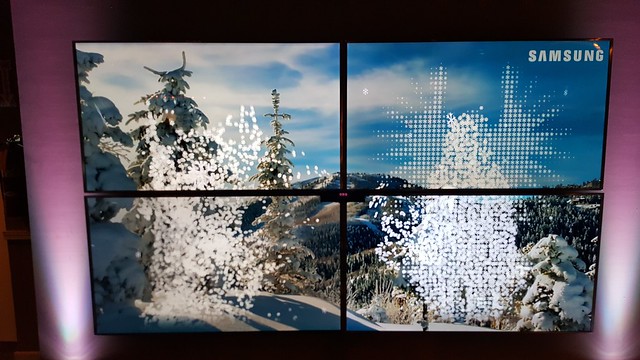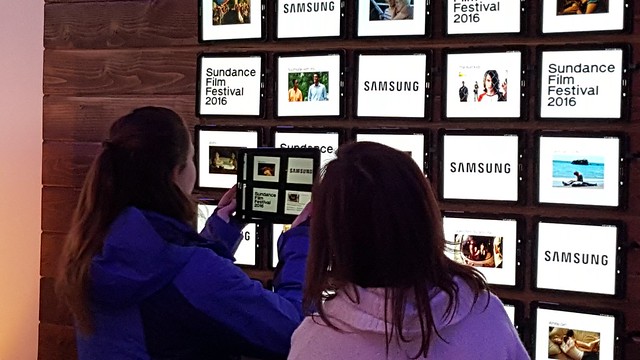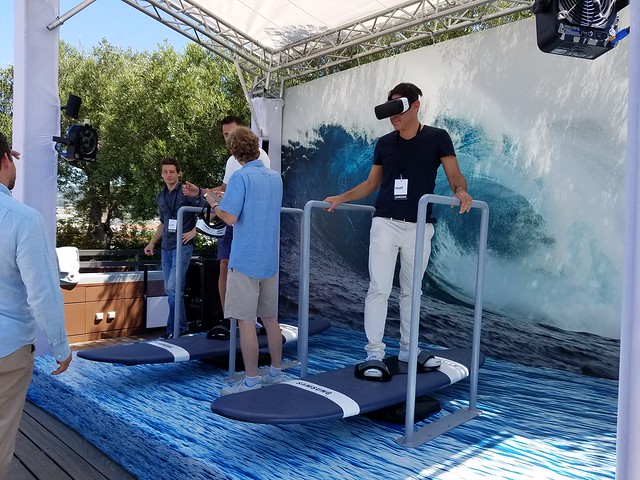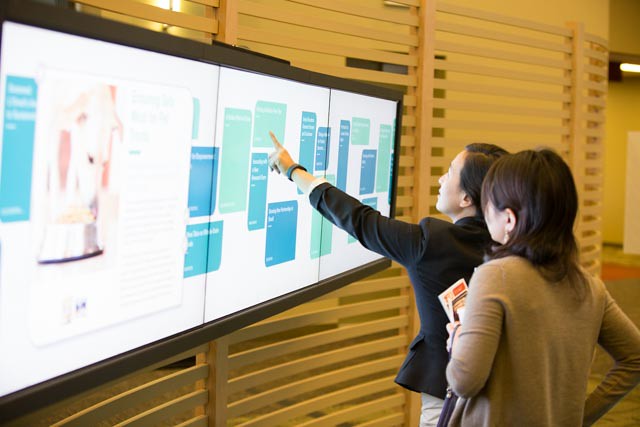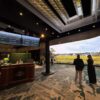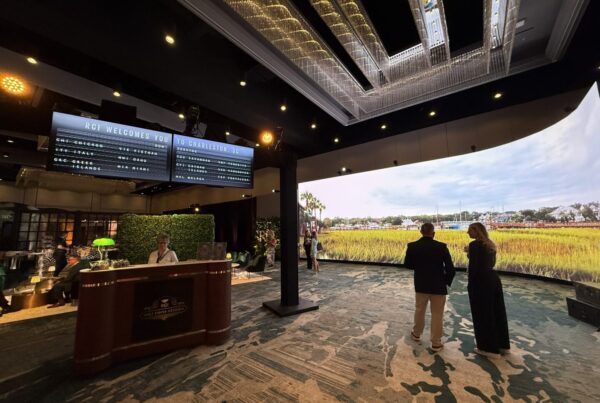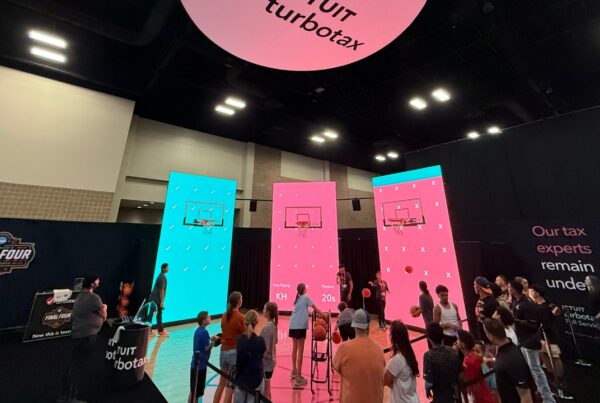If you’re interested in adding gameplay to an event, whether it’s for a trade show or a more formal presentation-style event, there are a few things you should know. First, is it attraction, dwell time, education, or entertainment that’s the primary driver for you looking to incorporate game elements? Second, what type of gameplay makes sense for the audience? During a presentation, everyone will most likely be sitting, which might take an endless runner out of the mix.
Having answers to these questions will help narrow the type of game, how you might apply creative treatment, and finally what kind of tech is required to drive it all. We thought it would be worthwhile to dive into a few different types of tech used to drive gameplay and some different styles of game that we’ve seen successfully incorporated into different types of events.
Types of Tech & the Gameplay They Enable
Gesture: This is most generally used to allow the human body to become the controller! This can drive endless runner-style games, pick-and-place experiences, or just simple interactive walls or floors.
Augmented Reality: Like a HUD, this provides additional information over the real world or other assets. We’ve seen this used to drive educational & exploratory style experiences, configurators (not a game, but still can be entertaining), treasure hunts, shooters, or flip card match games.
Virtual Reality: Immersion into an alternate world. VR provides either real-world captured content, complete 3D creations, or a mix of both! Great for transporting an audience into a specific context. Put them into a car, transport them to the moon, ride along with pro athletes. Your imagination is the limit with this. Also important to note, VR doesn’t mean headset. There are a lot of great experiences that would classify as VR that don’t require putting anything on.
Touch: The most common interface for gameplay, and second oldest to sensors. This works exactly like your phone’s touchscreen. This can drive any number of different styles of games, from classic arcade games to trivia games, puzzles, and even mobile-style games. With touch-enabled games, it’s more about the creative treatment than anything else. These can be entertaining and cost-effective!
Sensor: Various sensors can be used when it makes sense — pressure, distance, sound, laser. These are typically embedded into physical objects to blend physical and digital activations. We’ve seen pressure sensors drive a Simon Says style dance pad, lasers used to create a grid and allow shooting gameplay for cybersecurity, and even magnets to control a connected lego interface for a shipping game.
These are just a few examples of the types of tech used to drive a few different styles of gameplay. It’s easy to see that the experience can be as small of a footprint as a tablet, to a purpose-built display that houses a larger game. As we’ve mentioned, adding gameplay to an event is a great method to increase attraction, dwell time, and up the customer experience. In addition, embracing the idea that certain games are exclusive by nature, meaning only a few participants can interact with the game at a time, can drive more attraction as audiences gather to watch the action.
If you’re curious to see how a branded game could be leveraged for your next event, don’t hesitate to reach out. We’re uniquely positioned to deliver through our platform of services, which includes an in-house software development shop. Just hit the contact button below.



